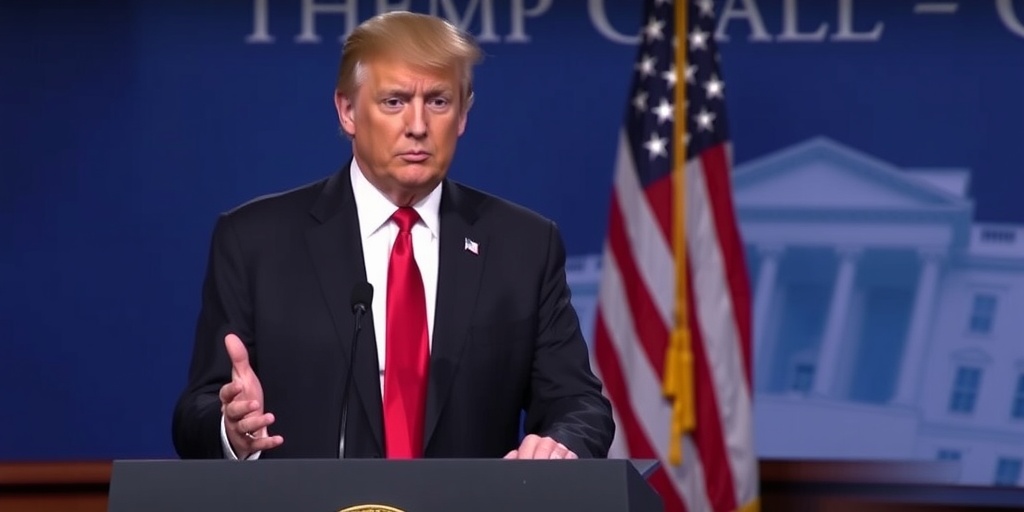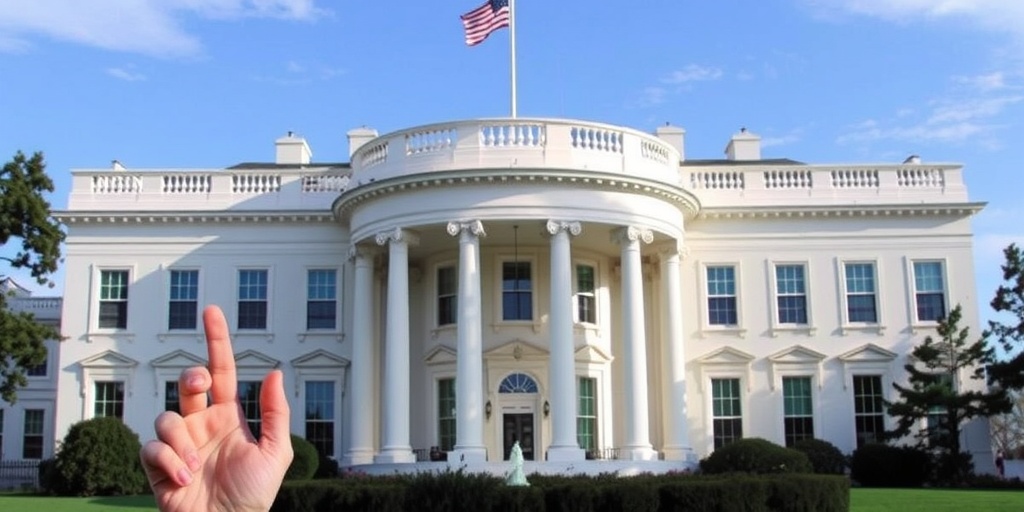Now Reading: Trump’s Tough Call: To Fire or Not Fire Michael Waltz?
-
01
Trump’s Tough Call: To Fire or Not Fire Michael Waltz?
Trump’s Tough Call: To Fire or Not Fire Michael Waltz?

Title: Trump’s Dilemma: To Fire or Retain National Security Adviser Michael Waltz Amid Leak Controversy
This past week, President Trump found himself increasingly preoccupied with a pressing issue: the fate of his national security adviser, Michael Waltz. The situation escalated following the accidental inclusion of journalist Jeffrey Goldberg in a private Signal group chat created by Waltz, which discussed an impending military operation in Yemen. As discussions about the leak unfolded, the president repeatedly posed the question to his inner circle: “Should I fire him?”
In public statements, Trump’s stance has been to defend Waltz vehemently while simultaneously attacking the media for their handling of the story. The day after The Atlantic’s Jeffrey Goldberg broke the news about the group chat leak, Trump publicly referred to Waltz as a “good man” who had nothing to apologize for.
Despite this public support, behind the scenes, Trump has been weighing his options. Sources familiar with the president’s thinking reported that Trump expressed dissatisfaction with the media coverage of the incident but was reluctant to appear as if he were capitulating to media scrutiny. His hesitation to dismiss senior administration officials this early in his second term added another layer of complexity to the decision.
A significant concern for Trump does not merely revolve around Waltz’s blunder in discussing sensitive military strategies via a commercial messaging app. Instead, sources indicate the president’s frustration stems from Waltz’s connection to Goldberg, a journalist whose work Trump has often criticized. During conversations, Trump showed particular annoyance that Waltz had Goldberg’s contact number saved on his phone.
On Wednesday evening, Trump convened a meeting with key advisors, including Vice President JD Vance, White House chief of staff Susie Wiles, personnel chief Sergio Gor, and Middle East envoy Steve Witkoff, to deliberate on whether to retain Waltz. Following this meeting, Trump signaled a willingness to keep Waltz in his position despite the brewing controversy.
Support for Waltz within the administration appears to be a contributing factor in his continued tenure. In addition, Trump’s desire to avoid parallels with the tumultuous staffing of his first term—characterized by the highest turnover rate of top aides in modern presidential history—also plays a crucial role.
This episode has underscored Trump’s inclination to disregard external pressures during his second term, while simultaneously navigating the intricate loyalty tests he has instituted for his staff. Notably, Waltz, even prior to the Signal leak, was already deemed to be on unstable ground, as some advisors considered him "too hawkish" on military matters regarding Iran, particularly in contrast to Trump’s preference for negotiating deals.
The connection, albeit ambiguous, between Waltz and Goldberg has fuelled skepticism amongst Trump’s inner circle. Some of Trump’s closest allies harbor doubts about Waltz’s compatibility with the president’s foreign policy vision; his past misalignments with officials such as Vance and Wiles highlight the ongoing internal conflicts within the administration.
The White House press secretary, Karoline Leavitt, articulated the president’s leadership style, asserting that Trump fosters an environment where differing opinions flourish. Nonetheless, once a decision is made, the team aligns to execute that decision, embodying Trump’s decisive authority.
Weeks prior to the Signal incident, various aides had broached the subject of Waltz’s ideological alignment with the president. Although Trump had initially expressed admiration for Waltz, he was keen on avoiding the initiation of personnel dismissals so soon into his second administration. Drawing on past experiences, Trump reflected on his decision to let go of his first national security adviser, Michael T. Flynn, after a mere month in office, understanding that it would bolster a narrative of chaos surrounding his presidency.
After the leak, a video snippet from 2016 featuring Waltz criticizing Trump as a “draft-dodger” resurfaced on social media, intensifying scrutiny from critics. In contrast, Defense Secretary Pete Hegseth appears to have a stable position despite sharing detailed operational information in the leaked Signal chat. MAGA supporters have rallied behind Hegseth, with Trump reaffirming his lack of concern regarding Hegseth’s involvement in the controversy.
While Waltz may be safe for now, the incident is a stark reminder of the challenges Trump’s aides face in operating under a president whose crisis management approach often entails denial and adherence to personal loyalties.Despite Waltz’s claims of never having had any interactions with Goldberg, these assertions were quickly undermined by photos circulating from a 2021 event that showed the two men together. While Waltz’s supporters dismissed such associations, the reality persists: many of Trump’s senior officials come from established Washington backgrounds, often bearing past connections to individuals Trump openly criticizes.
In Greenland on Friday, during a visit alongside Waltz to negotiate U.S. interests in the territory, Vice President Vance acknowledged Waltz’s responsibility for the Signal mishap while reaffirming support for Waltz, indicating the president’s intention to move past the incident, at least for the time being. “If you think you’re going to force the president… to fire anybody, you’ve got another think coming,” Vance asserted. Trump’s commitment to his national security team remains steadfast, as he and his administration navigate the complexities of loyalty, media scrutiny, and internal discord within the highest levels of government.
Stay Informed With the Latest & Most Important News
Previous Post
Next Post
-
 01New technology breakthrough has everyone talking right now
01New technology breakthrough has everyone talking right now -
 02Unbelievable life hack everyone needs to try today
02Unbelievable life hack everyone needs to try today -
 03Fascinating discovery found buried deep beneath the ocean
03Fascinating discovery found buried deep beneath the ocean -
 04Man invents genius device that solves everyday problems
04Man invents genius device that solves everyday problems -
 05Shocking discovery that changes what we know forever
05Shocking discovery that changes what we know forever -
 06Internet goes wild over celebrity’s unexpected fashion choice
06Internet goes wild over celebrity’s unexpected fashion choice -
 07Rare animal sighting stuns scientists and wildlife lovers
07Rare animal sighting stuns scientists and wildlife lovers





















